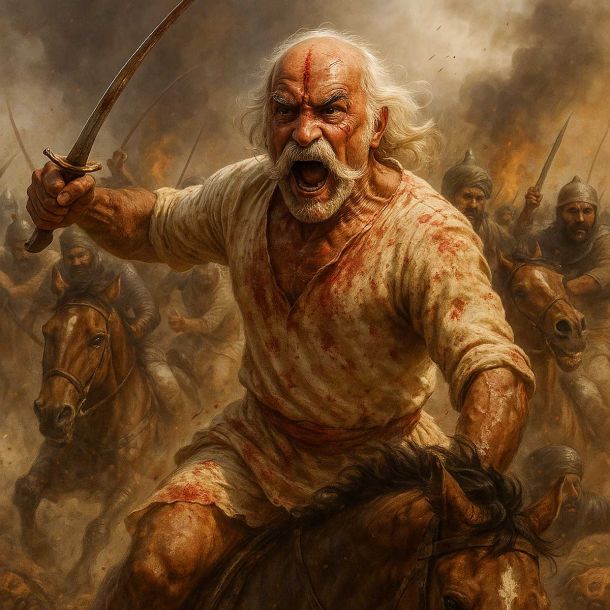MORE COVERAGE
Twitter Coverage
Satyaagrah
Written on
Satyaagrah
Written on
Satyaagrah
Written on
Satyaagrah
Written on
Satyaagrah
Written on
JOIN SATYAAGRAH SOCIAL MEDIA
How millennia-old diverse, polytheistic, ‘pagan’ Greco-Roman civilisation gave birth to an intolerant Christian-majority one: a lesson for Hindus
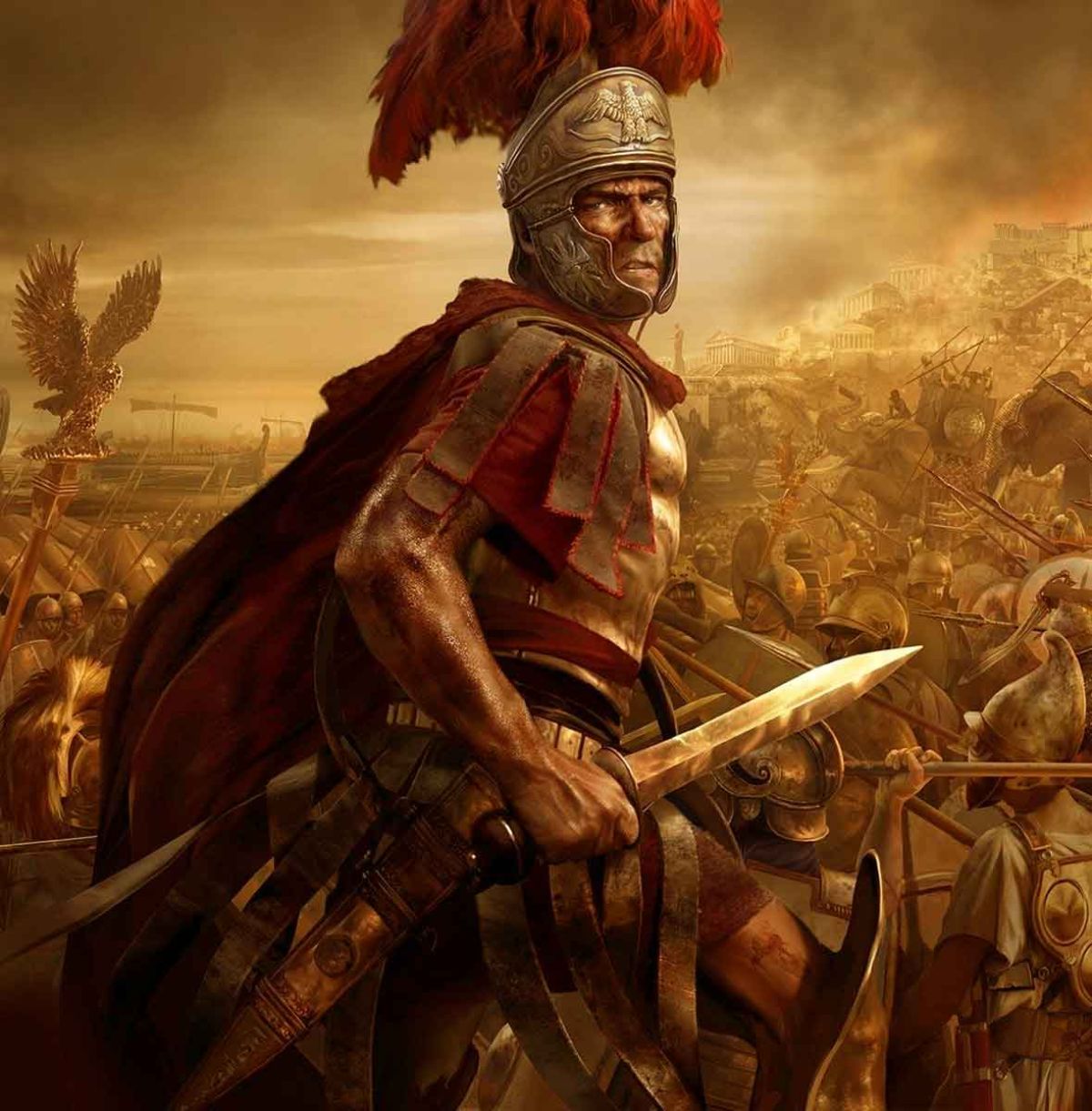
Late in 386 CE, Libanius, a 72-year-old teacher of rhetoric from the Syrian metropolis of Antioch, penned an oration addressed to the Roman emperor Theodosius I. It offered one of the most powerful criticisms of the process by which Rome became a Christian empire. Libanius described Cynegius – the Roman prefect who governed a vast swath of the eastern Mediterranean – leading troops of soldiers and Christian monks on a rampage through the Syrian, Lebanese, Palestinian and Egyptian countrysides.
‘This black-robed tribe,’ Libanius wrote of the monks, ‘eats more than elephants.’ They ravage fields, destroy temples, and attack fellow citizens. ‘Utter desolation follows’ in their path as they ‘strip off roofs, demolish walls, tear down statues, and overthrow altars.’ This is ‘nothing less than war in peacetime, waged against the peasantry’. What is the purpose of your army, Libanius asked the emperor, if ‘while you keep external enemies away, one group of your subjects attacks another?’
The emperor didn’t answer. Nor did Libanius really expect him to; he knew that Theodosius must have approved of Cynegius’s march of terror. It represented merely the latest phase in a revolution that transformed the Roman empire from a state that persecuted its small Christian minority into a Christian-majority state that used violence against pagans. Libanius had lived through the entire process.
Libanius was born into a very different Roman empire from the one he described in 386. It was a world of perhaps 60 million people, probably 90 percent of whom were pagans. Not that the term meant anything to them. ‘Paganism’ was a concept invented by Christians to describe everyone who was neither a Christian nor a Jew'. These 54 million Roman ‘pagans’ didn’t think that their religious practices had much in common with one another.
 Saint John the Evangelist Causes a Pagan Temple to Collapse (c1370) by Francescuccio Ghissi. Courtesy The Metropolitan Museum of Art, New York |
There was no reason they would. Roman pagans had no unified or organized church structure. They shared no sacred books or rituals. They didn’t even agree on which gods were real. Many pagans worshipped gods they imagined took the form of men; others depicted their gods in the shape of animals; and some, such as the disgraced 3rd-century emperor Elagabalus, saw their gods embodied in giant rocks.
Pagans also regularly mocked the religious ideas of other pagans. The 2nd-century satirist Lucian, for example, wrote about a fictionalized congress of the gods in which the Olympian gods and other well-recognized deities debated whether they could expel some of the empire’s newer and more exotic divinities, ‘supposed gods who filled heaven’ although ‘they were in no way worthy of the honor.
The gods didn’t just impress themselves upon the skylines and streetscapes of cities. Their presence infused daily life. In 4th-century Rome, the city calendar designated 177 days like holidays or festivals honoring more than 30 different gods and goddesses. Images of gods adorned nearly all Roman coins in circulation.
Even much of the meat supply in the cities and towns of the empire came from the butchering of animals offered as sacrifices at these temples. The early 4th-century Roman Empire wasn’t just a pagan empire. It was a world dominated by the sights, sounds, smells, and tastes of paganism. Just as it had been for thousands of years.
One feature of the early 4th-century Roman world differed significantly from Mediterranean societies of centuries past. Beginning in the last quarter of the 3rd century, the empire had built a robust military and civilian bureaucracy that extended across the vast territory under Roman control. This was essential.
If the empire of 310 existed now, it would be the world’s fifth or sixth-largest state, encompassing all or part of more than 45 modern countries. All of the free people living in these areas were Roman citizens, who paid taxes to the state and expected it to deliver protection and services in return.
The emperors of the early 4th century created one of the most efficient and dynamic administrative systems ever seen in the premodern world so that the state could fulfill these obligations to its citizens. The imperial bureaucracy came to employ as many as 50,000 administrators. Hundreds of thousands of professional soldiers filled Rome’s armies. Its legal system became so responsive that it regularly funneled petitions and questions about legal interpretation from the smallest village all the way to the emperor himself.
Even its coin production reached unprecedented levels of efficiency. The empire’s 17 regional mints produced tens of millions of coins a year in the 310s – a capacity that no Mediterranean or European state would exceed for nearly 1,500 years.
Rome made all of this possible by drawing upon the talents and skills of as many capable Romans as it could find. Finding them was a challenge. For most of the previous 300 years, the talented elites of the provinces had largely remained close to home. Fourth-century emperors then needed to work hard to identify and attract into imperial service the young Romans of the provinces.
By the middle of the century, the imperial government had created rosters of students whom it might hire into administrative positions, and offered generous salaries to those willing to enter imperial service. The ancient world was never a particularly meritocratic place, but this early 4th-century administrative revolution brought Rome about as close to a meritocracy as it would ever come.
Libanius and other children born in the 310s were the first Romans raised and educated specifically so that they could take advantage of the opportunities for wealth and power that this new administrative system provided. They came from small cities in the south of France, towns in Asia Minor, and even great metropolises such as Antioch. All of them were brought up by parents whose horizons seldom extended beyond their home region, parents who saw in their talented children an opportunity to make the family’s name and fortune is known on the largest, most open stage the ancient world had ever provided.
But there was a trade-off. This was not a meritocracy that rewarded iconoclasts. One could excel, but only if he (and they were all men) was willing to work hard and play by the rules the emperors set. So the most successful men of this generation learned to praise effusively, rarely criticize living emperors, and enjoy the rewards of their caution. All of this is important to understand because, while the generation born in the 310s was still being nursed, the emperor Constantine set Rome on the path to becoming a Christian empire.
 The Emblem of Christ Appearing to Constantine |
Constantine was born a pagan and converted to Christianity in the year 312 as he embarked upon a risky war against Maxentius, a formidable imperial rival based in Italy. The stories contemporaries told about his conversion paint the plausible picture of a worried emperor who asked for divine assistance as he set out on the campaign and then saw a divine sign in the heavens. A dream confirmed that Constantine had received a vision from the Christian God, who commanded the emperor to place a Christian symbol on his shields. Constantine did as he was told and defeated Maxentius near the Milvian bridge, just to the north of the city of Rome.
For 17 centuries, historians have seen the Battle of the Milvian Bridge as the moment that set Rome on a path to becoming a Christian state, but this didn’t happen immediately. It couldn’t have. Because no one in 312 knew what a Christian state would be like.
Constantine himself clearly didn’t know. He expressed his personal preference for Christianity, gave financial support to the churches, and exhorted his subjects to embrace the teachings of Christ. But Constantine also continued the ancient Roman practice of giving money to support traditional religion. He paid for the construction of monumental churches such as the Holy Sepulchre in Jerusalem, but he also put images of the old gods on his coins well into the 320s.
He tore down some pagan temples and ordered his subjects to stop sacrificing, but he also permitted cities to build new pagan temples and reiterated the legal obligation to perform sacrifices when public buildings were struck by lightning. Constantine summoned the Council of Nicaea – the first Christian ecumenical council – but he also retained the title of Pontifex Maximus, the chief priest in the Roman civic cult.
Constantine’s policies look like a mess to people accustomed to a monotheistic world where the God one worships often defines the personal identity that one claims, but Constantine didn’t live in such a world. While some Christians and Jews had conceptions of religious identity that resembled these modern ideas, worship and identity weren’t firmly fixed for most Romans.
Pagans could worship as many gods as they wished, in nearly whatever form they felt appropriate. Many pagans even worshipped Jesus, though in a fashion that sometimes included him among other gods to whom they also prayed. To Christians, Constantine’s actions could be understood as the prudent conduct of a Christian ruler governing an overwhelmingly non-Christian empire. But Constantine’s conduct was also comprehensible to pagans who continued to praise publicly their ‘most pious’ emperor.
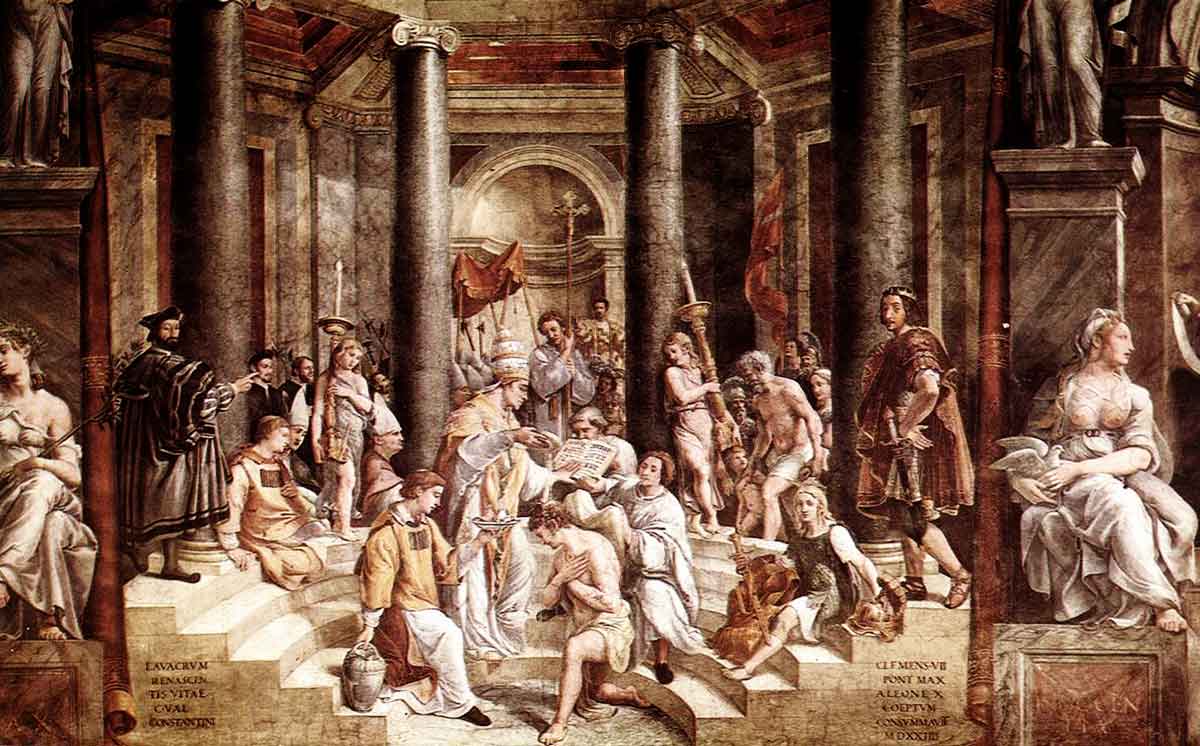 The Baptism Of Constantine. Fresco the hall of Constantine Palace of the Pope in the Vatican, 1520 by Raphael Sanzio: History, Analysis & Facts | Arthive |
Constantine died in the year 337, just as the oldest people born after his conversion were beginning their professional lives. These children of the age of Constantine built their careers under Constantine’s three sons, all of them convinced Christians who were less hesitant than their father to use the power of the state against traditional religion.
Constantius II, the longest surviving of the brothers, proved the most aggressive. He issued a series of laws banning sacrifices, closed some temples, transferred others to bishops who converted them into churches and did his best to encourage Christianity in public life. These changes were real and substantive, but the sheer amount of surviving pagan religious infrastructure meant that Constantius couldn’t dismantle public paganism in a generation.
This was a particular problem because many administrators charged with implementing his orders moved slowly or neglected to enforce the emperor’s anti-pagan laws.
All of the surviving monuments, temples, statues, and festivals dedicated to the old gods reassured pagans such as Libanius and his peers. They didn’t like what Constantius was doing, but opposition to the regime was risky. They had no interest in endangering their prominence and wealth by speaking out against objectionable policies that could amount to nothing. And these men promptly recast their complacency as prudence when Constantius died unexpectedly at the age of 44. He was replaced by his cousin Julian – who immediately announced that he was a pagan.
Powerful critiques of the injustice and religious fanaticism of Constantius poured from the mouths of the middle-aged men who had voiced no public criticism while that emperor lived. They also praised Julian as nothing less than a philosopher-king superintending a revival of traditional religious life. The inertia of the Roman administrative system had preserved the old rhythms of Roman religious life under the Christian emperors. Now a pagan emperor could repair what damage they had done.
Julian had grand plans for what this pagan restoration would look like. He envisioned an integrated, hierarchical pagan priesthood that organized religious life across the empire and performed charitable activities, much like the Christian church did. He restored the property to the temples, sponsored reconstruction projects, and started work on a third Jewish temple in Jerusalem.
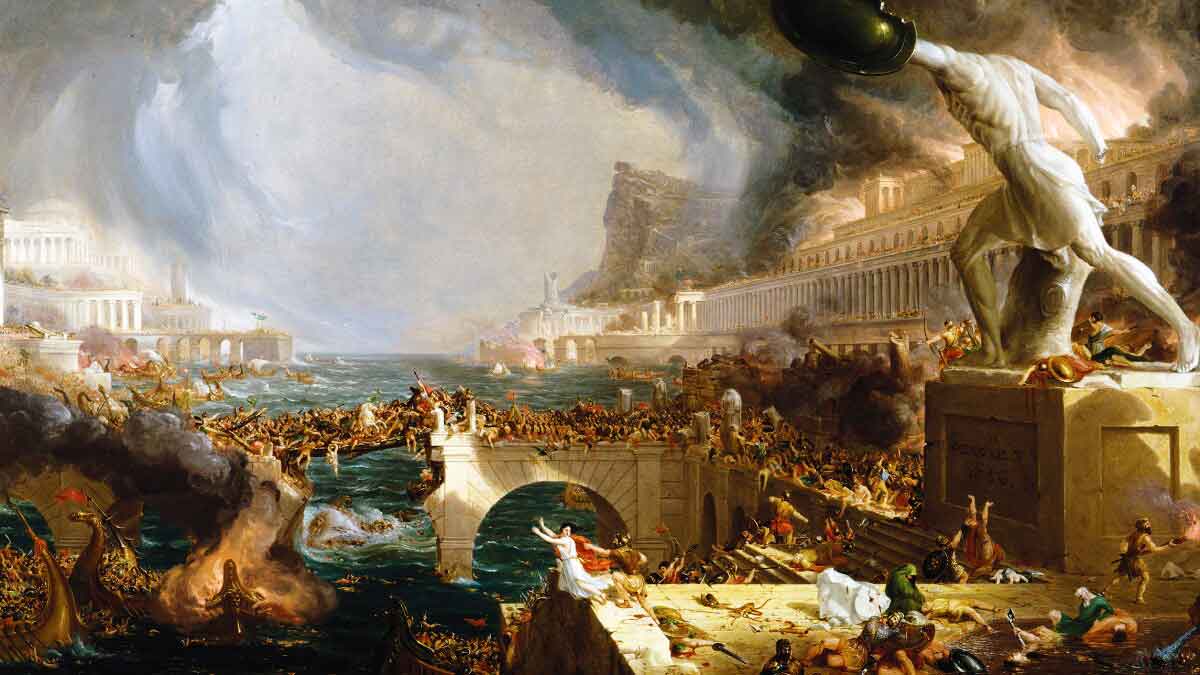 Barbarians at the gates | Washington Examiner |
In an action that alarmed nearly everyone in the empire, Julian even tried redesigning the Roman education system. Under his direction, the schools that served as the entry point to the imperial elite would focus their curricula on teaching about the old gods. He barred Christians from teaching in these schools because Julian claimed, Christians who refuse to teach ‘that neither Homer nor Hesiod nor any one of these, the authors about whom [they] lecture and explain, is guilty of any impiety’ are liars who can’t offer good moral examples to their students.
The reforms had only just begun when Julian died in the summer of 363, killed by Persian troops in a skirmish near what is now the Iraqi city of Samarra. For most of the next two decades, his successors focused on matters other than the Christianisation of the empire. The emperors were Christian, but they devoted little time or energy to destroying paganism or eliminating its practice. Pagans such as Libanius then slipped back into their old, oleaginous ways. They praised the emperors in public, muttered about their autocratic tendencies in private, and happily collected their public salaries.
It was in the 380s only, when Libanius and his peers reached old age, that the bill for a lifetime of sycophancy and complacency came due. Theodosius came to power in 379, promising to crush an army of barbarian Goths that had killed the emperor Valens, his immediate predecessor. Instead, Theodosius first lost to the Goths in humiliating fashion in 380 before concluding a peace treaty with them in 382 that seemed like a surrender. He desperately needed to change the perception that he was a failing emperor.
This is why, soon after he retreated from the Gothic forces in 380, Theodosius energetically embraced the idea that he would lead Rome to a new, Christian future by attacking pagan practices. He first issued a series of laws that restricted pagan activities. Sacrifices would be punished with the death penalty, temples would be closed and imperial officials who neglected to enforce these laws would be severely punished.
Many of these early laws reinstated prohibitions that Constantius first put in place in the 350s, but Theodosius ruled over a different empire than the majority-pagan one of Constantius. Theodosius’s empire was nearly majority Christian, with the youngest Romans the most likely to be Christians. The emperor knew that these eager Christians could help him accelerate the pace of Christianisation if they were allowed to work outside the constraints of an imperial administrative system designed to move slowly and deliberately.
This is why Cynegius rampaged across the Roman east with his band of soldiers and monks. Cynegius was an imperial official, but many of those who traveled alongside him had no place in government. They were Christian militants who accompanied the perfect precisely so that they could violently attack pagan shrines in a fashion that allowed Theodosius to avoid taking direct responsibility for their actions. They weren’t empowered by the state, but they were protected by a Roman prefect and his troops, fearsome traveling companions who ensured that they would not meet serious resistance from angry pagans.
Old men such as Libanius didn’t quite know how to respond effectively. They had spent their entire lives learning how to compete and thrive in a geographically and religiously diverse imperial system that rewarded loyalty and buffered the worst effects of radical changes in imperial policy. They were unaccustomed to operating outside of its rules and they struggled to respond to an emperor willing to empower paramilitaries to destroy pagan property and lives that the Roman state was supposed to protect.
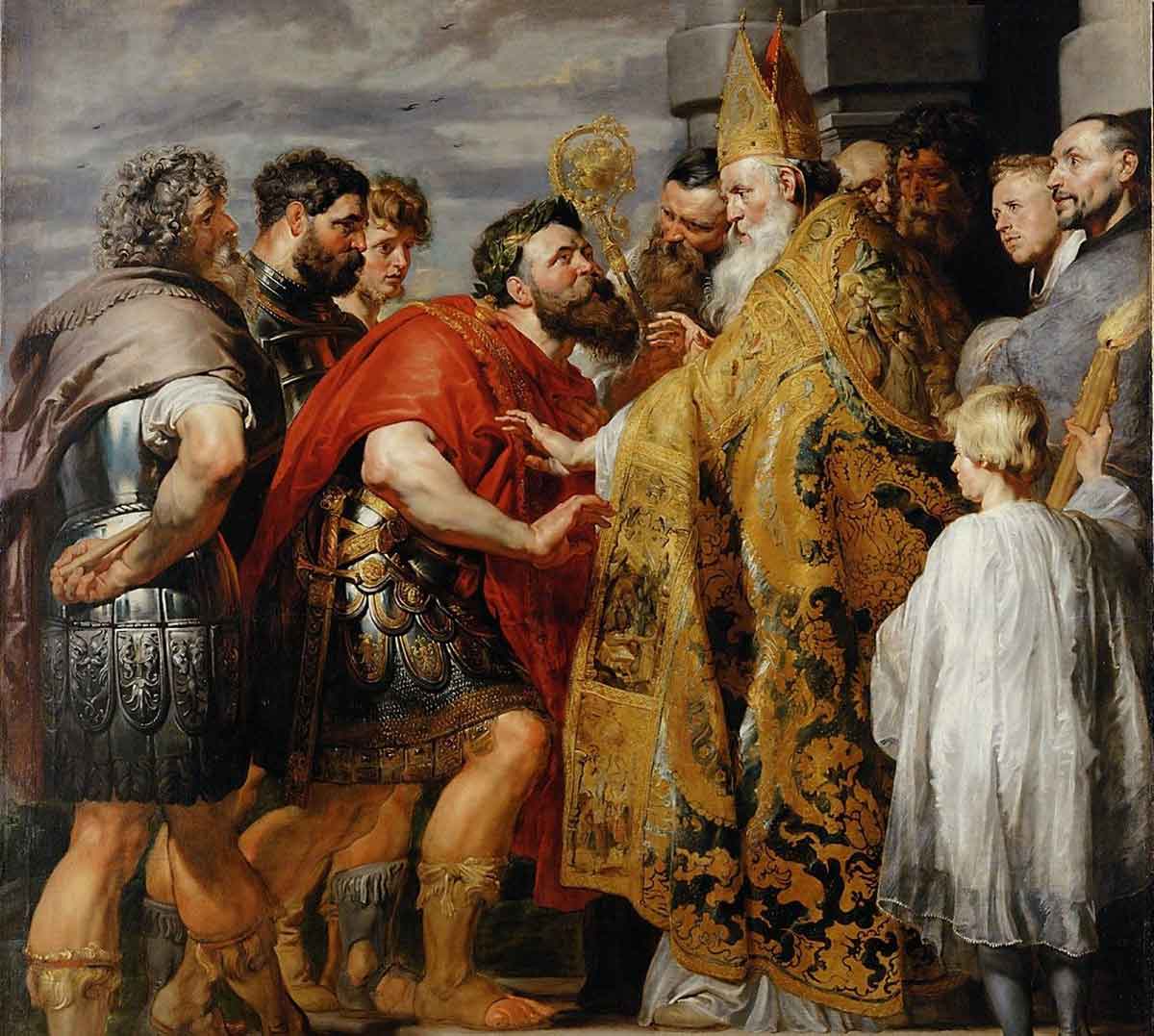 Saint Ambrose barring Theodosius from Milan Cathedral - Wikipedia |
This is why Libanius addressed his speech to Theodosius in 386. He could think of no better course of action than to appeal to the emperor who sat atop the administrative apparatus through which Libanius had been conditioned to work. But what, at first glance, looks like a defiant condemnation of an unjust political order, now appears to be the desperate pleading of an old man who finally recognized the true import of the transformational events that had been going on for his entire life. Despite his powerful call for reform, Libanius probably understood that it was already too late to save the world he treasured.
The pagan world didn’t yet look all that different from decades past. Many temples were still there, though the disinterest of worshippers and the decay of the buildings meant that the number of useable ones dropped steadily. Statues of the gods remained in public places and people still prayed to them in private homes, but fewer did this each year. Religious processions and public sacrifices continued in cities where local pagan authorities remained strong and in pious towns so remote that they attracted little attention, but more and more places stopped meeting these criteria.
The traces of the old gods that dotted Roman cities, towns, and villages once seemed reassuring. Now they seemed like the ghostly echoes of a nearly dead pagan past. The state had turned against paganism and, as the 4th century gave way to the 5th, the restrictions on pagans increased greatly. So too did the pace of temple closures until, by the middle of the 5th century, not enough pagan temples remained in use to bother with efforts to close them.
The Athenian Parthenon, one of the last major temples to operate openly, closed around 440. The goddess Athena then decamped to the house of the philosopher Proclus and, Proclus claimed, they cohabitated until he died in 485.
Proclus and others like him were devoted pagans – more devout, in fact than Libanius and many of his peers ever had been. But there remained no meaningful sense of pagan community to bind them, even after the threat to paganism became clear. Instead, pagans often condescended to or exploited one another.
Urban, educated pagans such as Proclus traveled to rural areas, informed the ‘rustics’ they found there that they had been worshipping incorrectly for centuries, and tried to force them to change their practices. The rustics living in areas that tacitly permitted the worship of the old gods reciprocated by profiting from gullible urban-pagan spiritual tourists.
How then should one think about this generation that so completely failed to imagine the future?
We shouldn’t blame the arrogant and opportunistic pagans of the 5th century for paganism’s demise. It was already in a terminal decline, helped along by complacent 4th-century pagans who did little to stop the transformation of Roman society. They were the last pagans with the opportunity to perhaps stop the Christianisation of the Roman empire, but they organized no sustained pagan resistance to Christianisation.
We do see isolated incidents in which the pagans of a single city rallied to defend a particular temple, but none of these events sparked wider protests by pagans across the empire. Someone who prayed to Athena in Athens or Jupiter in Rome might have been sincerely troubled by the Christian destruction of the Alexandrian Serapeum in 392, but they didn’t feel strongly enough about that god to fight on his behalf in their home cities. Nor would one expect them to. Fourth-century pagans were a unified community only in the imaginations of Christians.
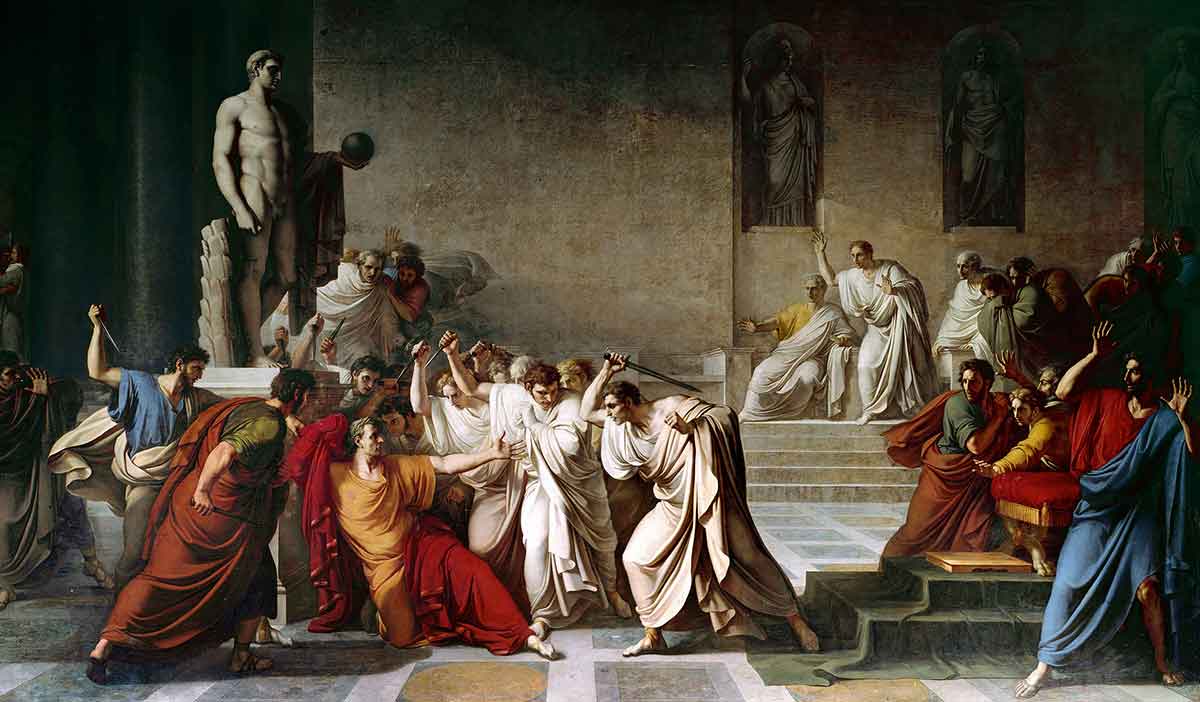 The Fall of Rome and the Lessons for India Today |
How then should one think about this generation that so completely failed to imagine the future? Things might have turned out differently if Libanius and others like him had spent their life battling Christianisation with the same all-encompassing vigour that the monks alongside Cynegius showed in promoting it. But Christianity was new and, in many ways, more attractive than the old cults. Christians sought out converts, taught them what the religion promised, and supported them both spiritually and, if necessary, monetarily.
Pagan cults were particularly ill-prepared to respond to a monotheistic religion that actively worked to permanently take worshippers away from the old gods. This wasn’t how paganism worked. It wasn’t rare for pagans to add a new god to the list of deities to whom they prayed, but most traditional cults didn’t ask their adherents to stop worshipping other gods when they prayed to a new one.
This tolerance made a great deal of sense in Rome’s diverse pagan religious marketplace, but it also meant that pagan cults had no experience fighting for the loyalty of their followers when the Christian church told Romans that they must choose to worship either Christ or the old gods.
Once state support turbocharged the church’s ability to reach across the empire, many Romans naturally preferred the promise of a new Christian empire to the traditions of the past. When they were asked to choose, Romans overwhelmingly chose Christianity.
The final pagan generation’s shortsightedness still stands out. They acquiesced to the rule of Christian emperors pursuing the elimination of paganism in exchange for a few decades of government salaries and fancy titles. These men could have fought against a change they fundamentally disagreed with. They got rich instead.
Everyone tempted to believe that future generations will have time to address difficult issues that we selfishly choose to ignore should remember their sour legacy.
(This essay by Prof. Edward Watts was first published on aeon.co on 27 Oct 2020 with the title “Fiddling while Rome converts” and is being republished here with certain portions in bold for emphasis)
Satyaagrah Note
The events described in this essay have an eerie similarity to what Hindus face in modern, post-Independence Bharat. While we were being ruled by colonial powers like the British and Mughals, Hindu society & religion managed to survive by growing more rigid and brooking no interference in their social and religious matters, in exchange for economic and political subservience to the colonizers. Of course, perennial resistance and armed rebellions from some quarter or the other ensured that the colonizer was always on guard and knew better than to push ordinary Hindus beyond a point.
However, things changed dramatically after physical independence from the British. Hindu society, believing that now the rulers would be ‘one of them’, let their guard down. We trusted Gandhi blindly and there was no resistance when Nehru, an Anglicized man whose distaste for Hindu rites and rituals was never hidden, was appointed PM through backroom machinations.
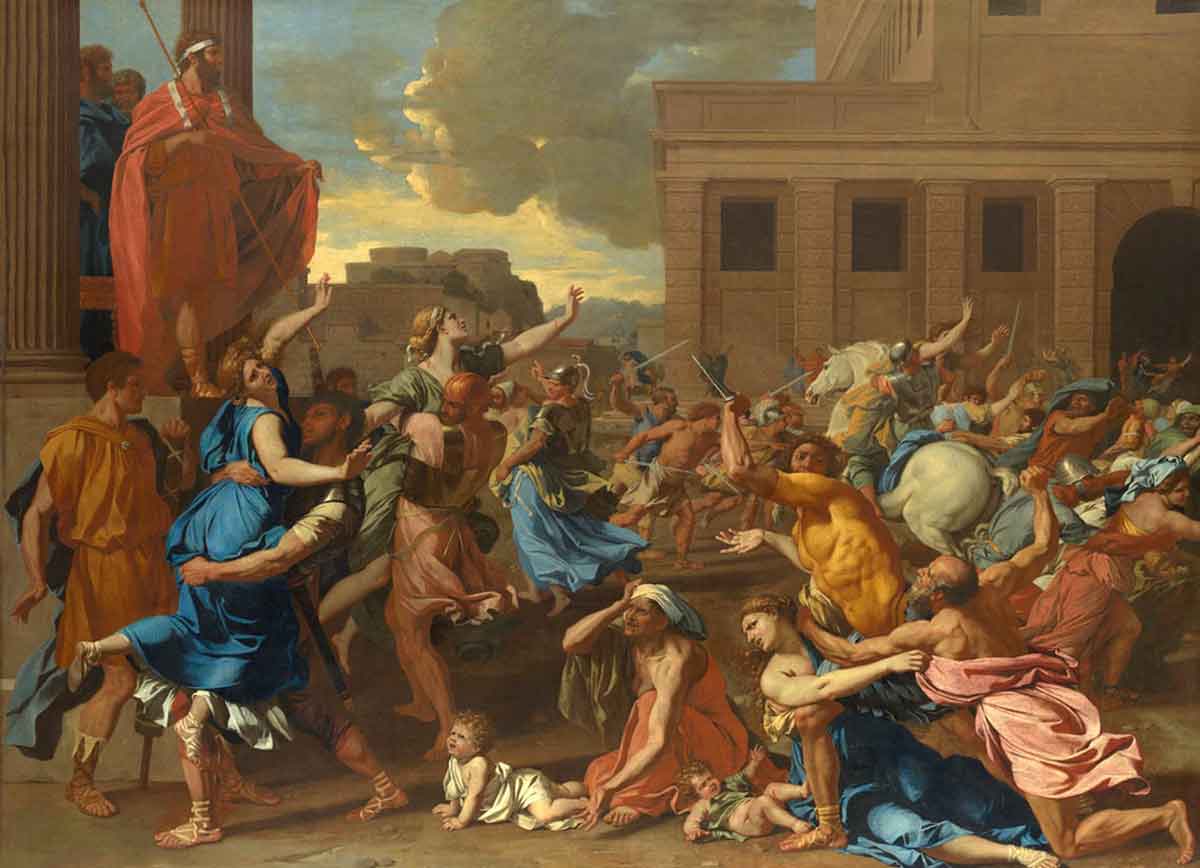 |
The seeds for the de-Hinduisation of our country were sown in our Constitution itself. Nehru and his daughter Indira then took the project forward, albeit while still exhibiting some tolerance for Hindus. The ten-year rule of super-PM Sonia Gandhi, an Italian-origin Roman Catholic, delivered some fatal body blows to Hindu society and mainstreamed brazen minority appeasement. Andhra Pradesh, and how the father-son duo of YSR and Jegan Reddy have wreaked havoc on Hindu Dharma and surreptitiously empowered rampant Christian evangelization, is another example of how we are being hollowed from within using state power.
Today, most of the evangelists operating in Bharat are of Bharatiya origin, funded heavily by the US and other Western Christian groups. The Islamic world is pouring in funds for its own proselytization efforts. Like the pagan elites & bureaucrats of 4th century Rome, Hindu elites and bureaucrats are equally complacent and condescending towards concerns of ordinary Hindus. Hindu society is exhibiting the same apathy towards its sacred places and state oppression as pagans did in the late 4th century. Atrocities against Hindus in one place don’t invite wider protests from Hindus across the country.
It took a mere 100 years for the millennia-old diverse, polytheistic, ‘pagan’ Greco-Roman civilization to turn into an intolerant Christian-majority one. It has been 73 years since the secular Indian state has been working hard to ‘transform’ Hindus – the future is bleak unless our current generation develops the same all-encompassing vigour to organize sustained Hindu resistance to our enemies that our ancestors displayed in the past.
References:
hindupost.in - Web Desk
 Support Us
Support Us
Satyagraha was born from the heart of our land, with an undying aim to unveil the true essence of Bharat. It seeks to illuminate the hidden tales of our valiant freedom fighters and the rich chronicles that haven't yet sung their complete melody in the mainstream.
While platforms like NDTV and 'The Wire' effortlessly garner funds under the banner of safeguarding democracy, we at Satyagraha walk a different path. Our strength and resonance come from you. In this journey to weave a stronger Bharat, every little contribution amplifies our voice. Let's come together, contribute as you can, and champion the true spirit of our nation.
 |  |  |
| ICICI Bank of Satyaagrah | Razorpay Bank of Satyaagrah | PayPal Bank of Satyaagrah - For International Payments |
If all above doesn't work, then try the LINK below:
Please share the article on other platforms
DISCLAIMER: The author is solely responsible for the views expressed in this article. The author carries the responsibility for citing and/or licensing of images utilized within the text. The website also frequently uses non-commercial images for representational purposes only in line with the article. We are not responsible for the authenticity of such images. If some images have a copyright issue, we request the person/entity to contact us at This email address is being protected from spambots. You need JavaScript enabled to view it. and we will take the necessary actions to resolve the issue.
Related Articles
- If Islam Is a Religion of Violence, So Is Christianity – the scientifically barbaric and intolerant religion
- Missionaries cannot have freedom of expression to vilify others’ religious beliefs - Madras HC refused FIR quash on Catholic priest’s anti-Hindu hate speech
- Christian fundamentalist Charles Dickens who hated Hindus and Bharat with a vengeance bordering to the insanity – quite like another British hero Winston Churchill
- Online petition titled ‘Free Goa from Indian invasion & its continued illegal occupation against UN resolution’ had been started by Atanasia Lobo
- Hinduphobia To Hindumisia: Advancement of Western Academia for Hindu Hatred
- Another tale of grooming jihad involving a young Christian girl and her much older Muslim husband from Kerala: Resistance to convert to Islam led to the leak of her intimate videos, even Christian-leaning media downplayed it
- Lavanya who chose death than choosing Christianity has become a nationwide Resolution #JusticeForLavanya: BJP launches massive agitation in Tamil Nadu after girl committed suicide because of forced conversion by school
- "Dissidents in Saudi Arabia, Israel and India are languishing in Jails and USA is the biggest ally of these tyrants": Elle India publisher Arif Ayyub suffers a meltdown, wants Muslim nations to join military forces against Saudi, UAE and attack Israel
- When Nehru faced mass opposition for restraining press freedom and freedom of expression to protect ‘moral standards’ of Indians
- Bloodcurdling Palghar lynching of Hindu Sadhus is yet to be heard in a court of law, reports hinted broader conspiracy designed to eliminate them: Role of Christian Missionary, some NCP leaders, and leftists suspected
- A Pilgrim to the Soviet Paradise - Genesis and Growth of Nehruism Vol 1
- Master of fabrication and deceit: 4 occasions where eminent “historian” D N Jha misled to suit the narrative
- Propaganda to Vilifying Hindutva by media: Gurugram protesters seeking Kalicharan Maharaj’s release dubbed as ‘Anti-Namaz brigade’
- A Missionary Sacred Heart Higher Secondary School continuously pressurized a student to convert to Christianity to continue her study: 12th standard girl Lavanya ends life by committing suicide in Tamil Nadu
- Tamil Nadu Police in the wee hours arrested Ganesh Babu from Pudukottai district who had given a complaint about religious conversion happening in his area
